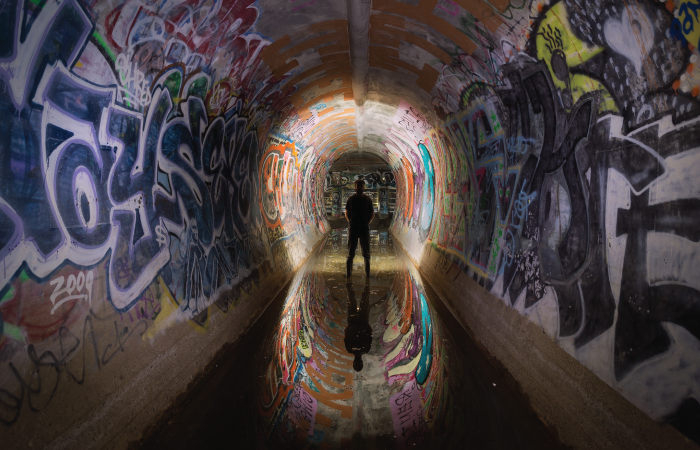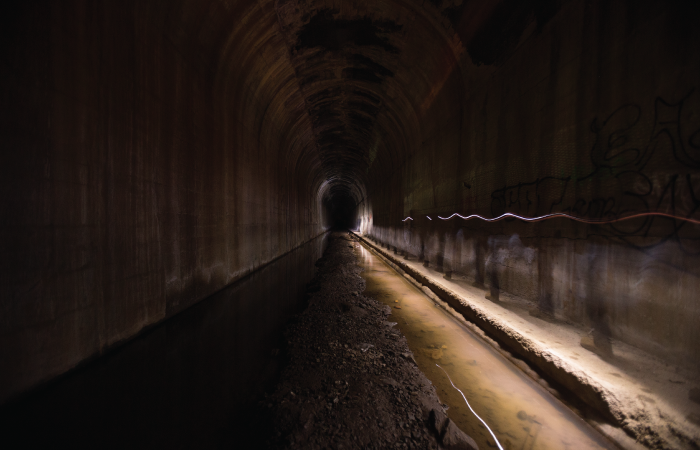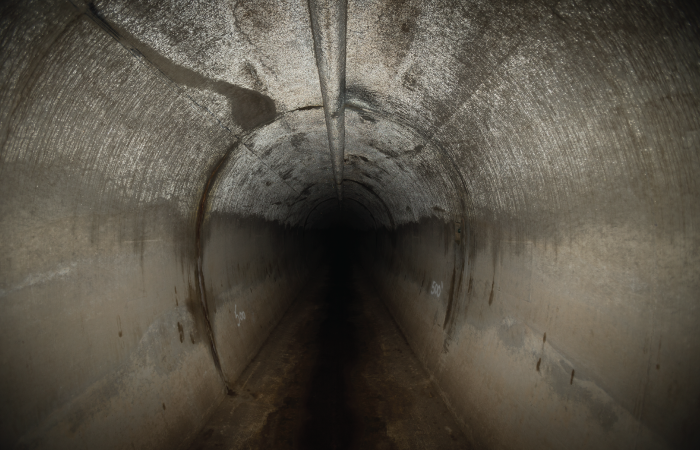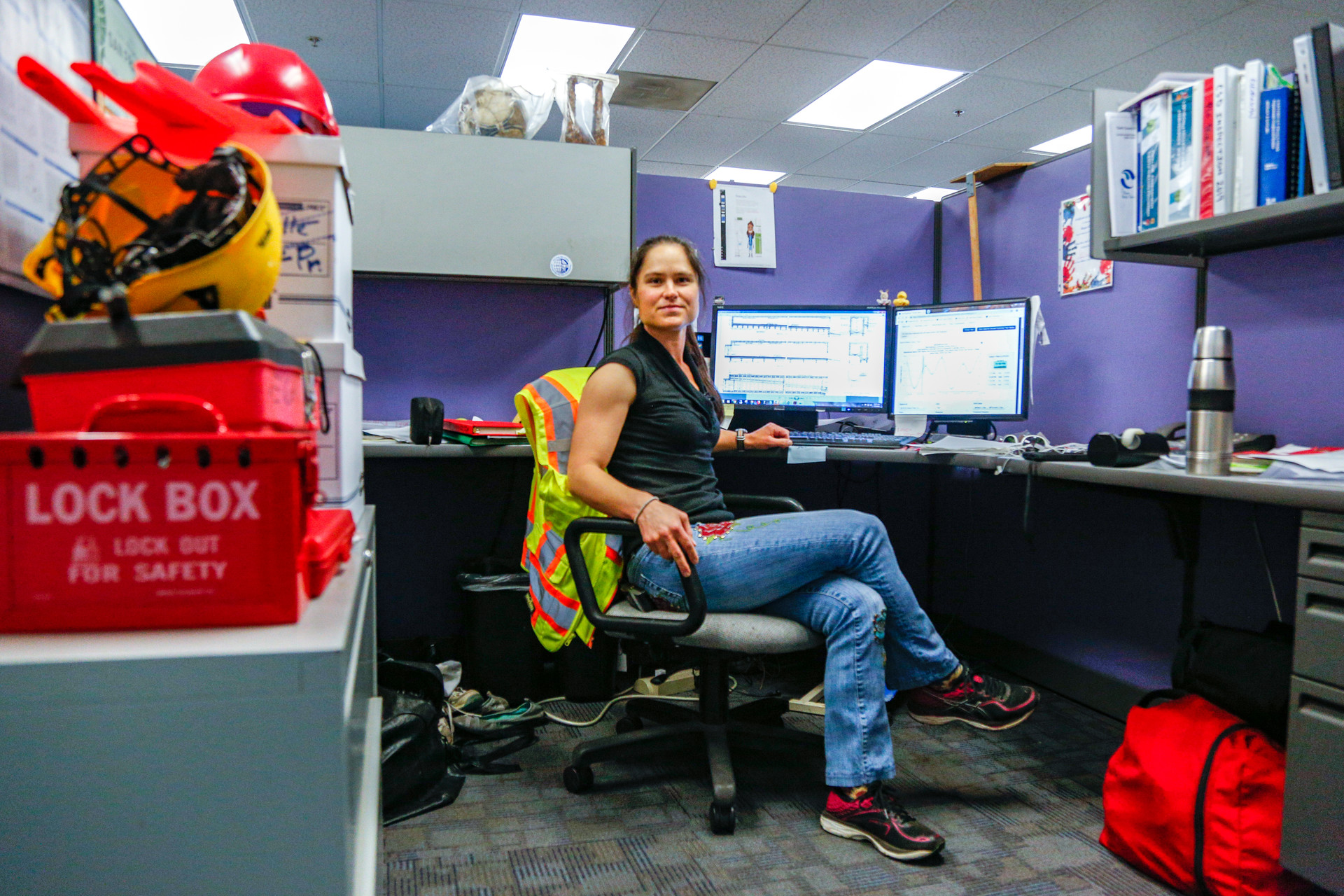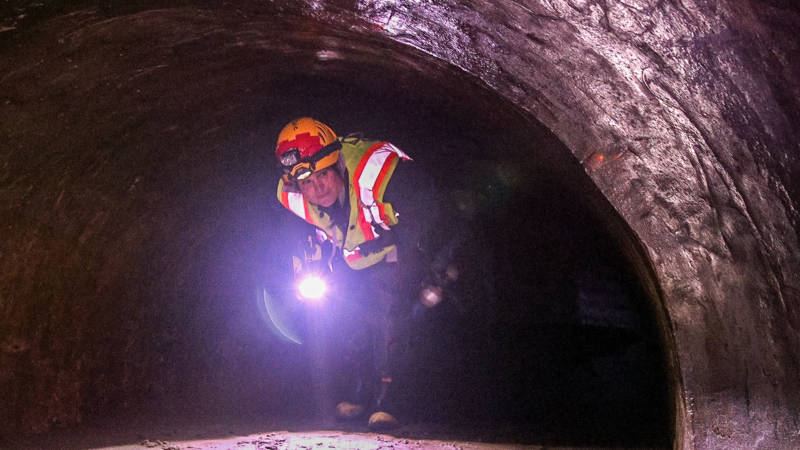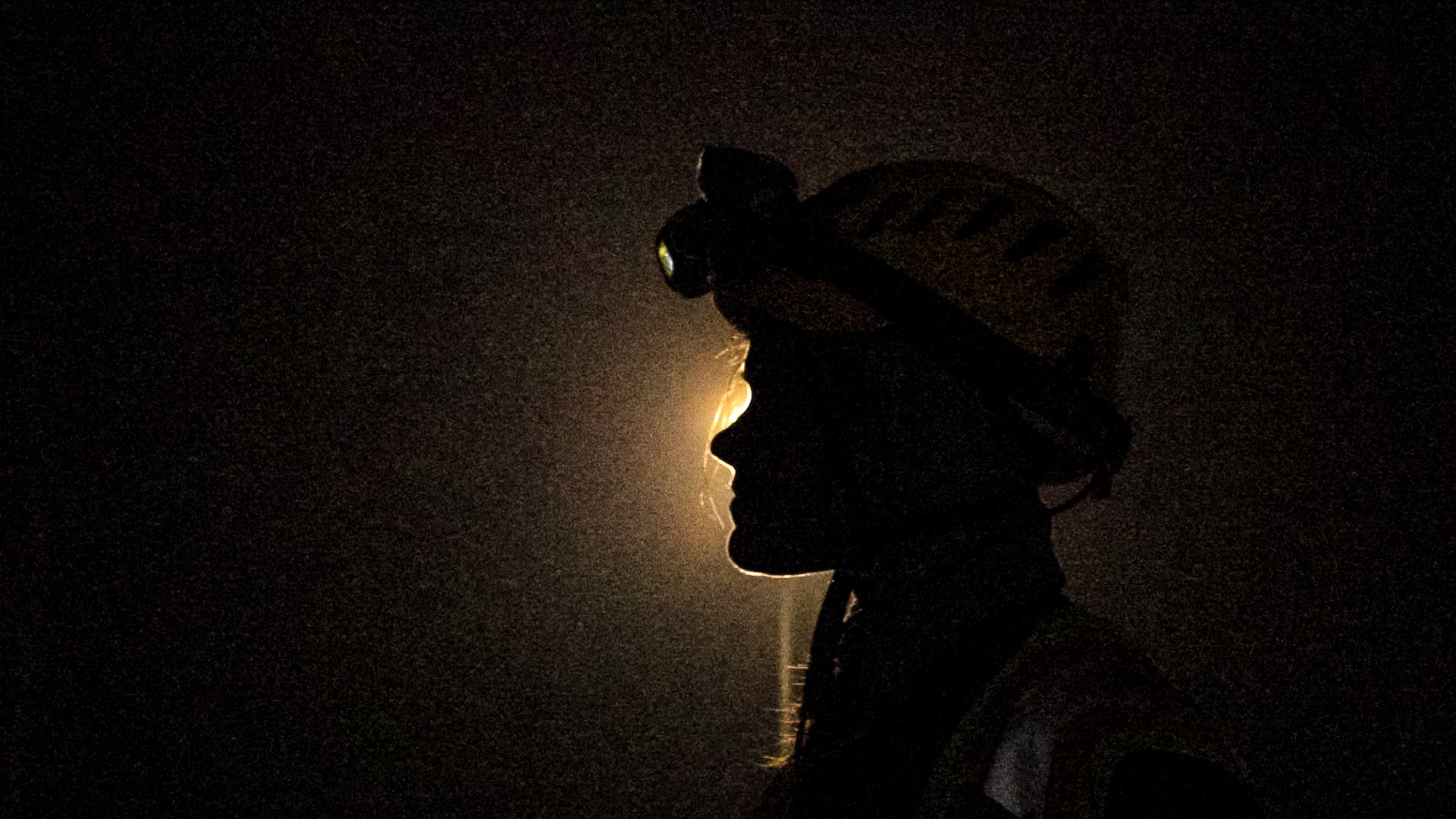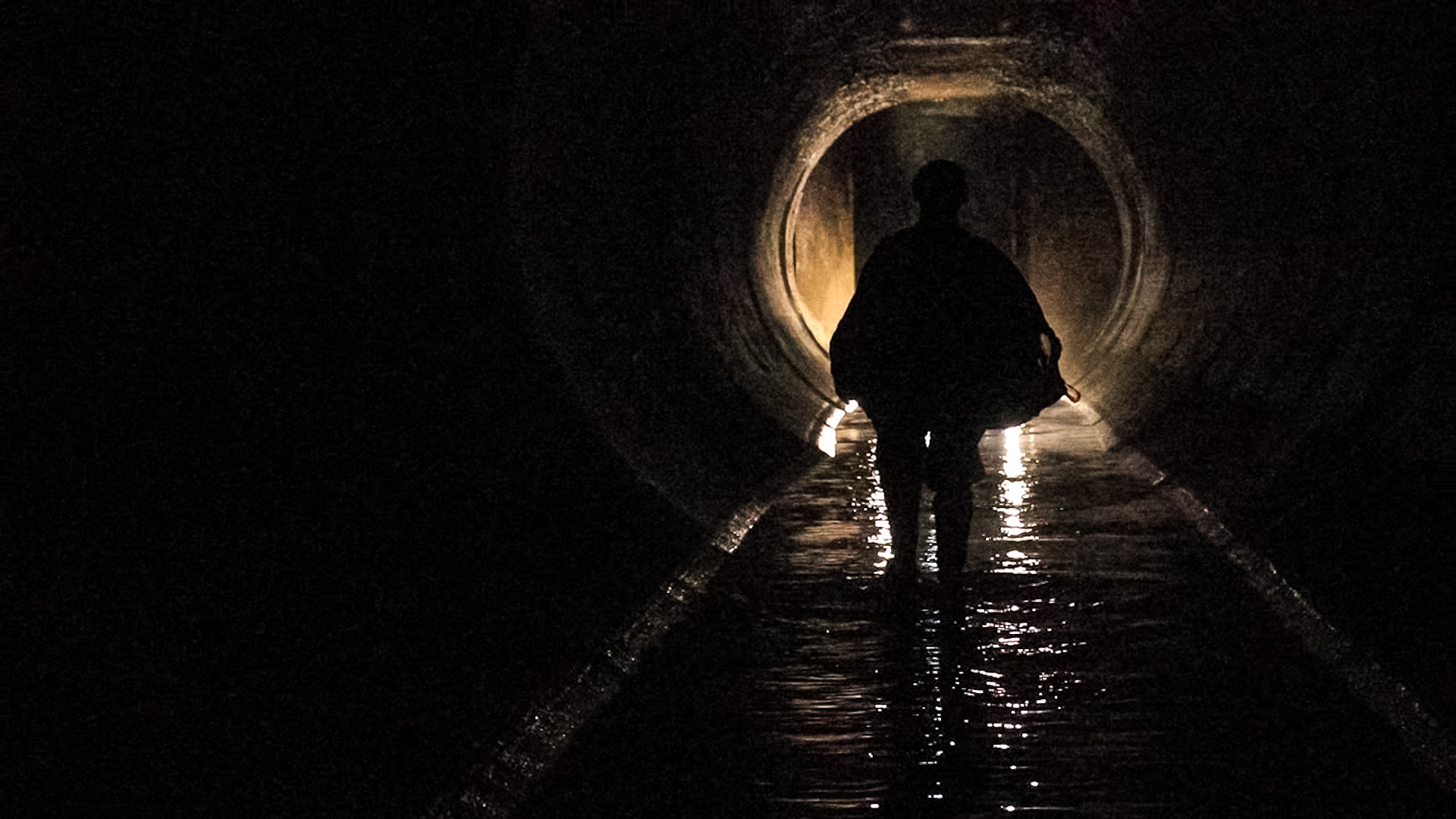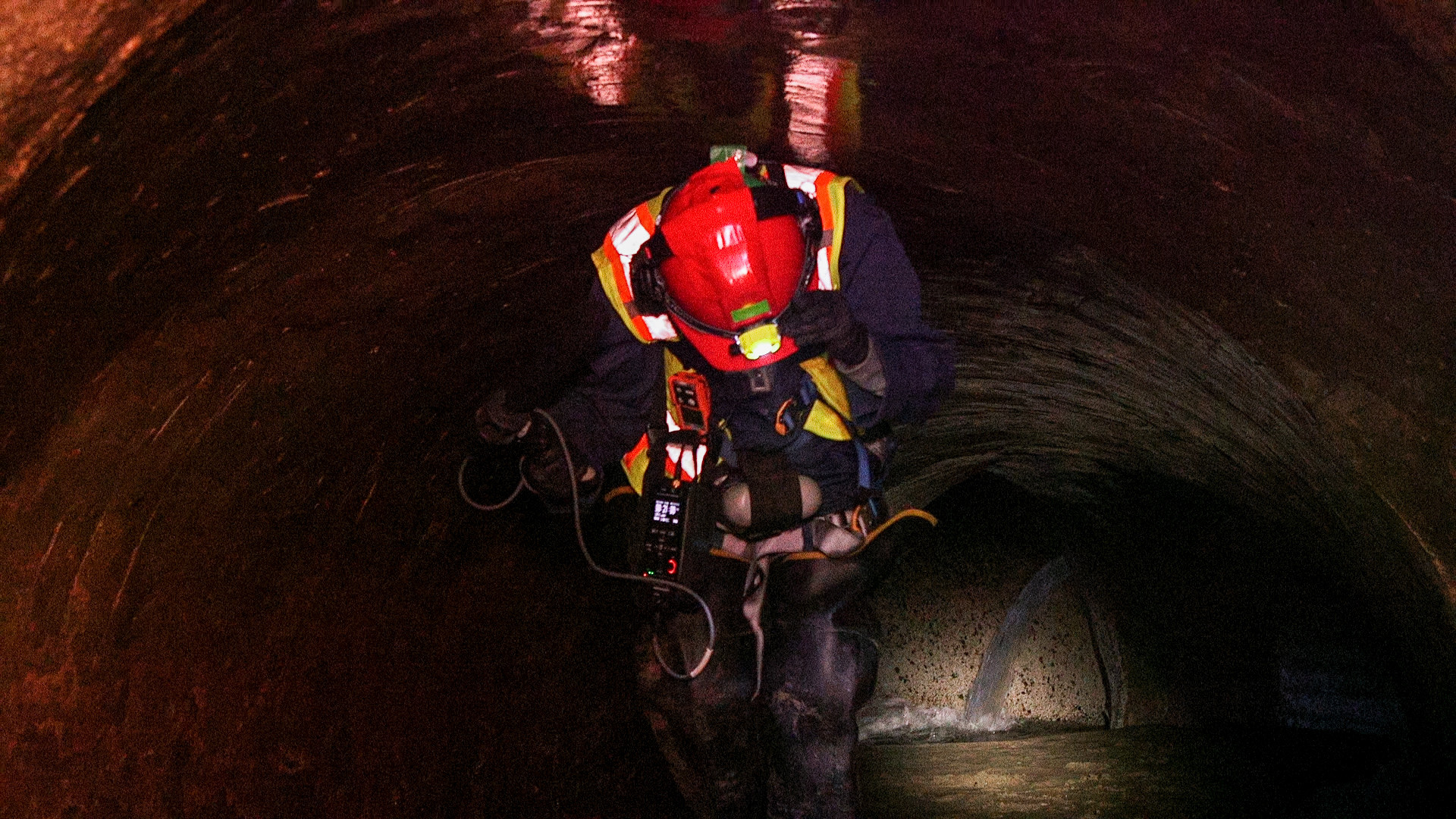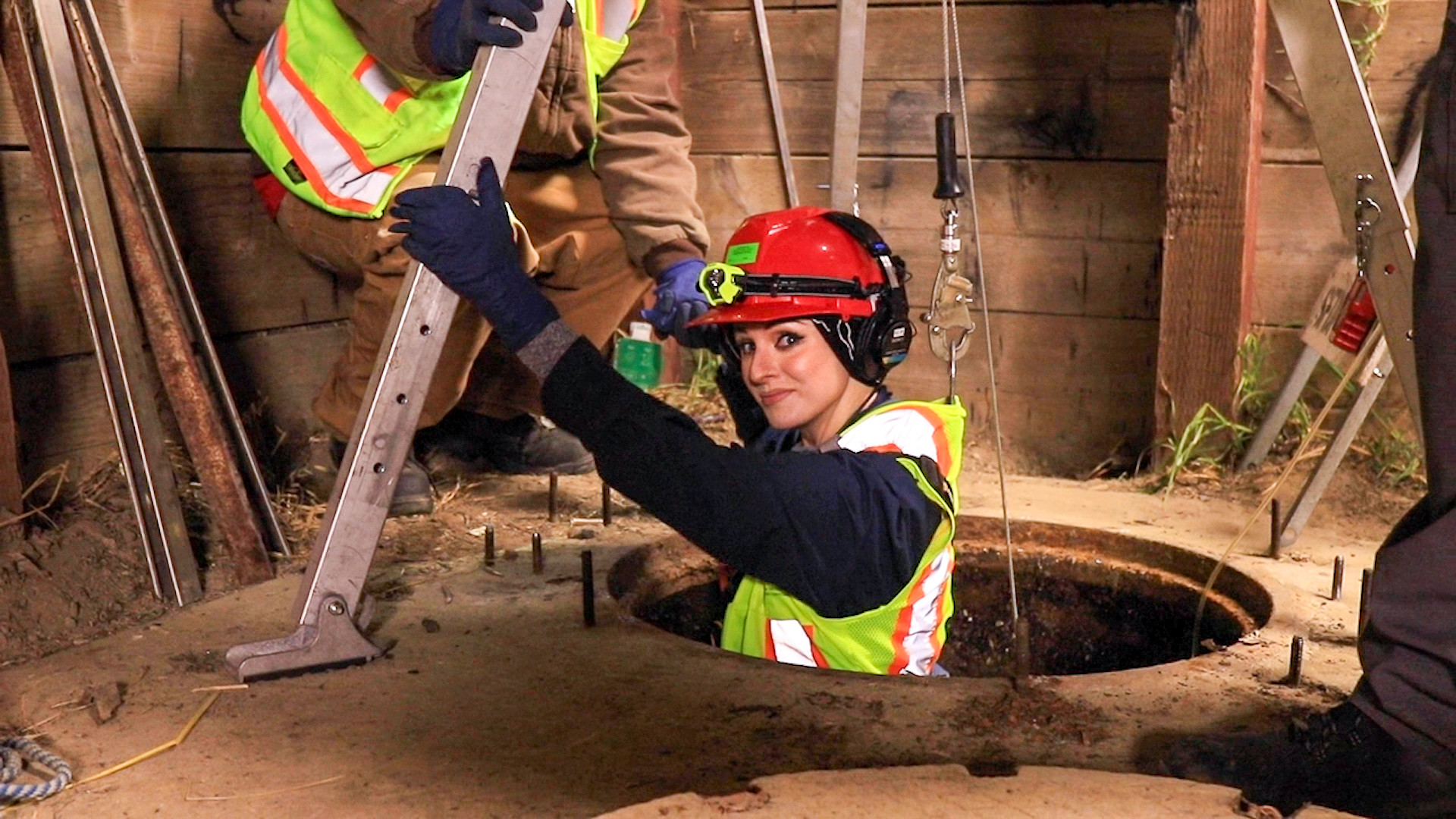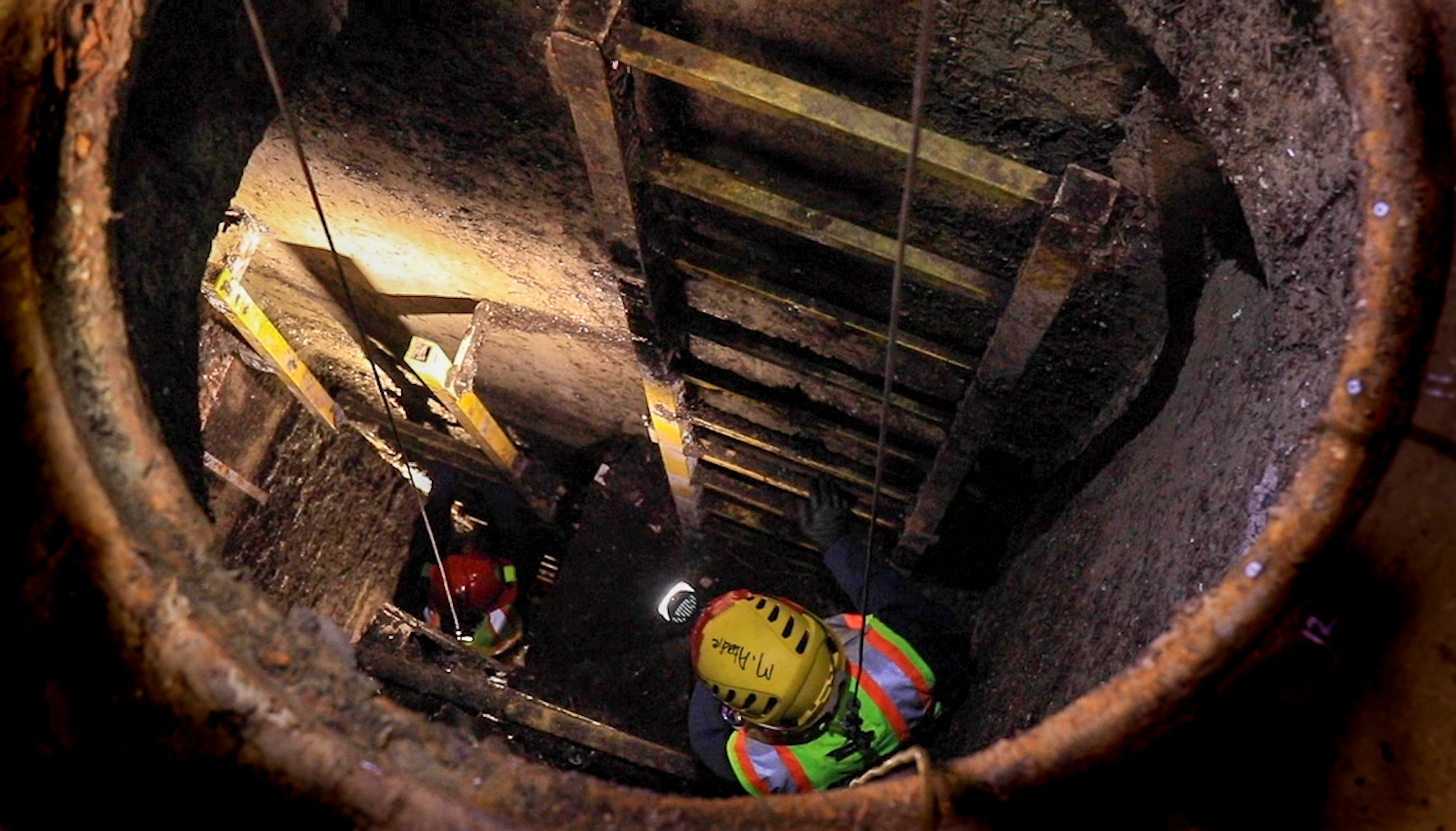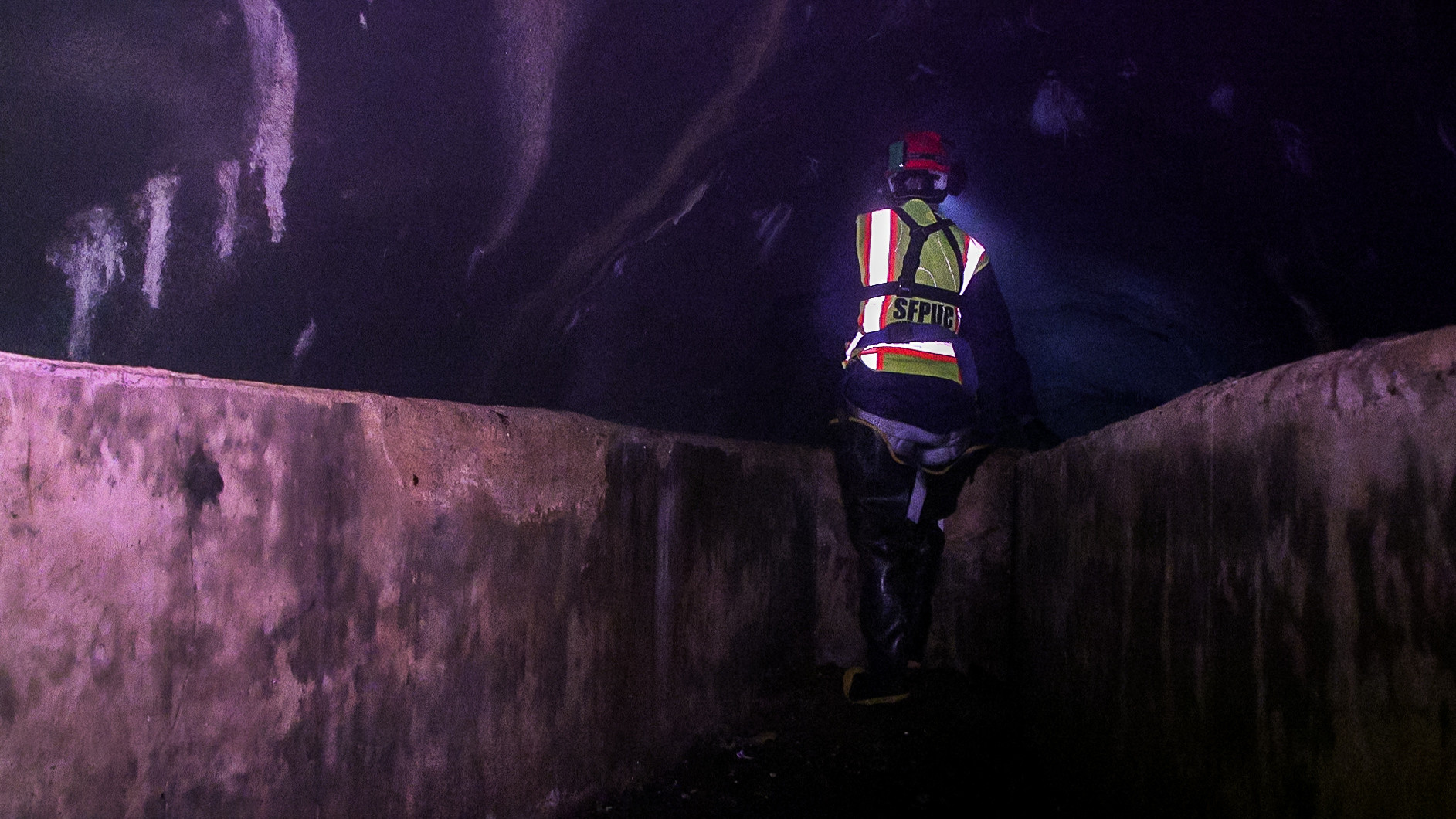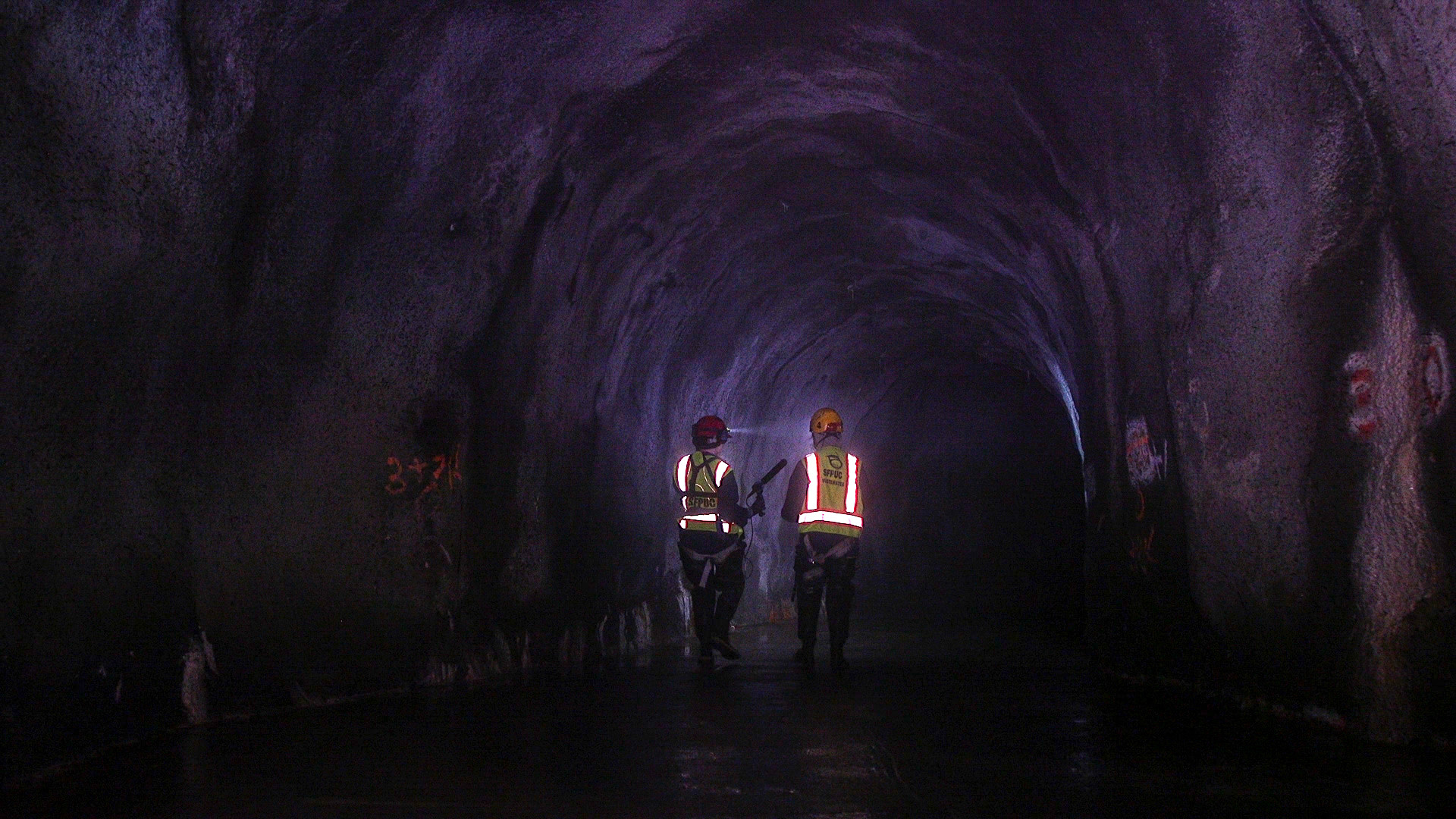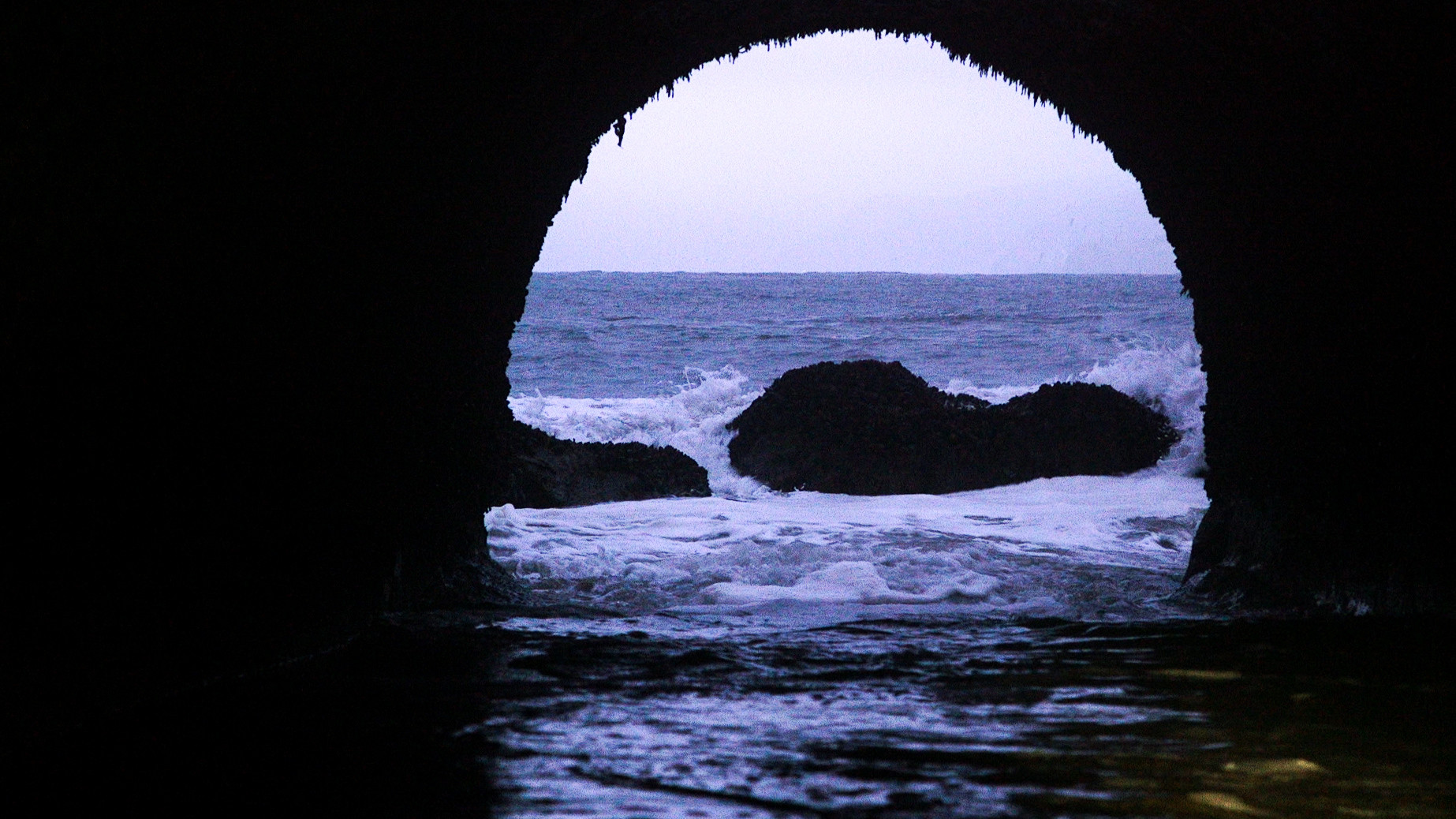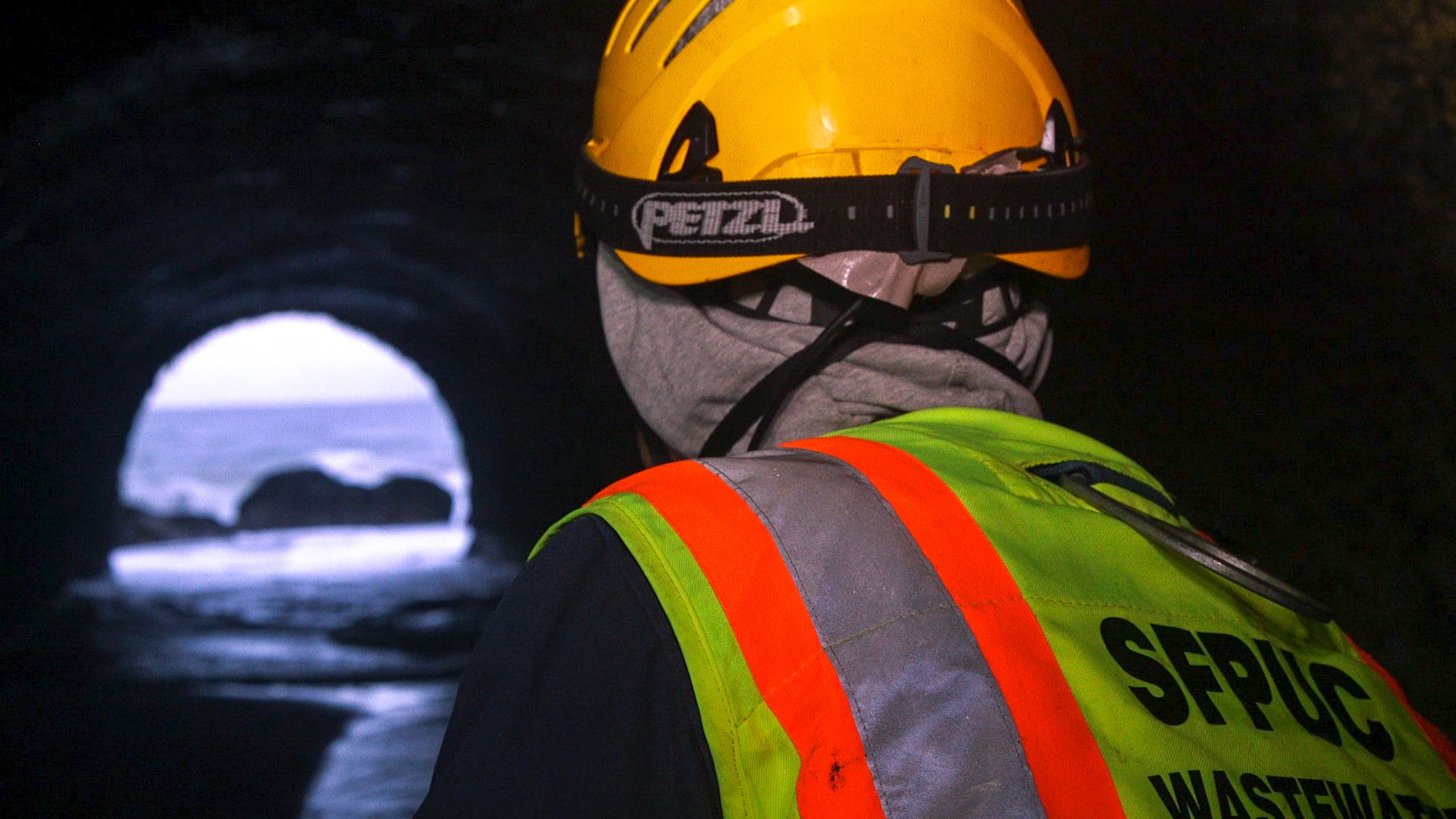Episode Transcript
[Sounds of birds, dog barking]
Olivia Allen-Price: Around us all the time is the city that we know. The same stretch of sidewalk we walk on every day, the bus stop on the corner, our favorite restaurants, our neighborhood parks. If you live anywhere long enough, you can think you’ve seen it all. But what if beneath the streets there was another world? A place that’s so close to you all the time, but you wouldn’t even recognize it.
[Bay Curious theme music starts]
Hey everyone, Olivia Allen-Price here. Over the years we’ve been running Bay Curious, we’ve received a bunch of questions about tunnels. Listeners who say they’ve heard stories of secret passageways running under San Francisco. We aired an episode on the topic in 2019, but your questions have kept on coming … So today we’re going to revisit it, and answer the question do these tunnels exist?
Sponsor Message
Olivia Allen-Price: Those stories about hidden underground tunnel systems in the Bay Area. They’re true!
[Underground tunnels echo]
Carly Severn: The structure is absolutely amazing. It’s also quite scary.
Olivia Allen-Price: That voice you just heard was recorded deep under the streets of San Francisco, and it belongs to reporter Carly Severn. We sent her to investigate the secret world under the city,
[Mystical music]
Carly Severn: A lot of you will have heard the legends about the very real labyrinths under major world cities, like the famous catacombs of Paris, that are lined with the bones of the city’s dead. And if you hit Google looking for information on San Francisco’s underground like I did, there’s a name that comes up again and again an urban explorer called Sierra Hardman. And his incredible, haunting photographs of shadowy spaces under the city are, for many people, their first clue that this world of tunnels really exists.
Sierra Hartman: I think it’s just ingrained in human nature. You know, you wonder what’s down there.
Carly Severn: Sierra told me he’s been obsessed with exploring the underground since he was a kid, back when he was growing up in Southern California, riding around on his bike, Goonies style, and peering into dark urban waterways.
Sierra Hartman: I mean, you take a 12 year old kid and you show them an entrance of a tunnel like they’re gonna to go in.
Carly Severn: When he was older, he moved to San Francisco and started roaming the streets with his camera while the rest of the city was sleeping, just looking for secret entry ways underground, guided by maps and city plans and whispers from other urban explorers.
Sierra Hartman: So much of it is just overgrown. Yeah, you drove past it so many times you don’t really recognize it as something really special. You don’t realize that there’s a whole, like, underground part of this thing.
Carly Severn: He found doorways and manholes that led him down into dark, dripping tunnels stretching into blackness beyond the reach of his flashlight. But this network of underground spaces, this is no secret labyrinth built by shadowy figures. It’s San Francisco’s huge sewer network, and there’s one person in this city that knows the sewers inside out.
Megan Abadie: So my name’s Megan Abadie. I’m an assistant engineer for the San Francisco Public Utilities Commission Wastewater Enterprise.
Carly Severn: Megan’s job is making sure that system – yep – pipes filled with your waste works.
Megan Abadie: I crawl through a lot of sewer pipes. That’s basically my job.
Carly Severn: Wastewater management, what we call sewers, can sound kind of gross, but how this stuff all works is pretty impressive.
Megan Abadie: San Francisco is about a seven by seven, you know, 49-50 mile square city. And we actually have over 1000 miles of sewer main. There’s sewers under every block.
Carly Severn: The thing about the city’s sewers is many of these pipes are big. Big enough for curious risk takers to walk through rather than crawl, which isn’t possible in many other cities.
Megan Abadie: San Francisco has a very different type of sewer system than pretty much any other city in California. It has what’s called a combined system. That means that the stormwater and the sewage water leak from your toilet and your sinks, it all goes into the same set of pipes.
Carly Severn: We have an old city, and that one pipe system was how folks did it back then.
Megan Abadie: San Francisco’s sewer network, began to be built during the Gold Rush era. So there are some pipes that date from the 1840s. It was a very ad hoc system at that time that people would build pipes to just connect to the nearest creek.
Carly Severn: Just like in New York, another old dense city. It was too hard to rip up San Francisco’s sewer network to add secondary pipes. So we’ve repaired and adapted our old system, creating a maze of those big wide sewer mains. But listen, if you’re hearing this and are feeling the lure of exploring the world on the San Francisco yourself, don’t. Seriously.
Megan Abadie: There’s a lot of things that can happen in the sewer that can actually kill you pretty easily.
Carly Severn: There was no way I was going to follow in the footsteps of an urban explorer like Sierra Hartmann and go roaming under San Francisco alone. But there was this one particular place that Sierra told me about that I knew I really wanted to see.
[Dramatic music]
A passageway somewhere beneath San Francisco that’s famous for its otherworldly look. Sierra had to pour over old sewer maps to find it. I was told it looks more like a cave than a sewer. And it leads right out onto the Pacific Ocean. Megan knew exactly the place I meant. And when conditions were just right, she said she’d take me down there herself.
Megan Abadie: We’ll be over 200 feet below the ground, actually.
[Crew conversation in the background]
Carly Severn: And so that’s how I end up with Megan and her crew, at 2 AM on the 4th of July in a harness, in a waist-high waders, getting recording equipment taped to my body, about to be lowered down into an open manhole.
Megan Abadie: …Does it feel..? Oh, look like it’s a good height, you don’t need to adjust the height.
Carly Severn: Our underground journey will lead us through a very watery tunnel, through that sewer cave, and into what they call a discharge pipe. Now, that pipe is the way the system can safely get water out during really heavy storms, when the usual storage areas under the city are full to the brim.
Megan Abadie: Yeah, so when we get out into the discharge pipe, you’re going to hear the ocean, just boring through this final stretch of tunnel. And you can actually, like, feel it. You can’t just hear it – you can feel it in your gut.
Carly Severn: I can’t wait!
As one of her crew is strapping a bright yellow gas meter onto my suit, Megan tells me more about the very real dangers of being in the sewers. The big one is a lethal gas called hydrogen sulfide that can kill you before you know it’s there.
Megan Abadie: You can smell it at low levels, it smells like rotten eggs. At higher levels that actually kills the nerves, it kills your smell nerves, it kills your old factory nerves. So at higher levels, at levels high enough to be dangerous, you won’t smell it at all.
Carly Severn: And because of the gas risk, I’m getting an air pack too.
Megan Abadie: That’s exactly like the, oxygen masks that you have on an airplane. You just put it over your face and breathe through it, and it’ll give you oxygen.
Carly Severn: Okay, well, fingers crossed we don’t end up using these.
Megan Abadie: You won’t, you won’t. But it’s good to know how to.
Carly Severn: Oh yeah.
After all this, I’m finally lowered down many feet into the tunnel by rope down a tall, rusting ladder until we splash into knee deep water and into the sewer.
[Sounds of water splashes]
And I’m staring down into a long, gaping tunnel that seems to stretch out for miles. Oh my goodness. This is exactly like I thought it would be, from watching horror movies. The air is really damp, exactly like they said it would be. You can kind of see this fine mist in the air, and I can hear my voice echoing in a really crazy way. There’s water flow under my feet… And it’s like walking through stream with a really dirty stream. Speaker 2: [00:08:45] We start to make our way toward the sewer cave that few people have seen. Megan tells me that had it been raining above ground, this tunnel would have been a lethal river of freezing water right up to the roof.
Yeah, this would totally be fun.
Megan Abadie: Oh, yeah. You wouldn’t – we don’t go into the system when there’s even a drizzle.
Carly Severn: If you ever wondered what it sounds like to wade through raw sewage, it’s pretty much like this.
[Carly wading through water]
Weirdly, it does not smell that bad in here. Well, at least not as bad as I thought. Kind of smells like if you spent time on a farm. Kind of smells like that.
Megan Abadie: When I started working in for the city in 2011 and doing sewer entry.. So that was after the Lord of the Rings movies came out, and it reminded me of the mines of Moria with all the pillars, except it was full of water. Yeah. I thought it was really cool. I even thought it was cool seeing little turds float by. I mean, that’s not something everyone gets to see.
Carly Severn: As we get closer to what I’d come to see. That cave, the crashing of the ocean out on the outside world suddenly gets louder. And then looming in front of us, right there in the tunnel. There it is. What looks like the tall, wide mouth of a cave, deep under San Francisco, dark, jutting rock yawning into more blackness. The entrance to the pipe that leads out to the water.
It’s amazing. It looks like it looks like a Middle Earth.
Megan Abadie: Yeah. Isn’t it beautiful? This is, this is definitely the most scenic and beautiful combined sewer overflow in San Francisco. It’s the only one that’s carved into raw stone like this.
Carly Severn: We walk into the cave through a stretch of that discharge pipe, and there’s the final surprise. We can see the Pacific Ocean just feet away, framed by the rock.
[Water flowing]
After hours underground, we’re now staring at broad daylight. This entrance, unthinkably, is how some explorers try to get in here from the outside via a tiny strip of beach that only opens up for a brief period of time.
Megan Abadie: It’s a bad idea to go into the sewer anywhere, but it’s a really bad idea to go into the sewer via an access point that is only going to be passable for like, an hour or two.
Carly Severn: Crouching there in that pipe, I see how quickly the waves are starting to rush towards us, a sign that it was time to hurry out of there and back above ground.
Okay, it is definitely smelling a little different on our return journey, and I think that’s because people have woken up by now and let’s just say they are using their bathrooms. And after being reattached the rope and having my tired body hauled out of the darkness and up through the manhole again like that, I am out of the underworld.
[Carly laughing]
And out into daylight on the 4th of July. Cool.
So there you have it. San Francisco’s secret underground is pretty incredible, even if our legendary tunnels are actually some not so secret sewers after all. Except… maybe there’s something Sierra told me that I couldn’t get out of my mind.
[Mystical music]
Sierra Hartman: A lot of these sewers are maps. Because in the 1906 earthquake and the entire city, or the entire eastern half of the city anyway, just burned to the ground. They lost tons of records of infrastructure.
Carly Severn: And you know what? According to the city, he’s right. So there is still a touch of mystery under San Francisco, after all.
[Music fades]
Olivia Allen-Price: That was KQED’s Carly Seven. This is a story that you really need to see, not just listen to. Video producer Sruti Mamidanna made a video from Carly’s trip and it is very cool. You can find it at baycurious.org – we’ll drop a link in the show notes too. It’s a new month, which means a new voting round is up at baycurious.org. Let’s hear the choices.
Question 1 : How clean is the Bay Area water? Is it safe to swim? Are some areas better than others? What would it take to get it fully clean or safe?
Question 2: Whatever happened to the Bay area’s camels? I went to high school in Benicia and heard things about the camel barns. There are no longer camels in the barns. Where did they go, and why were they there to begin with?
Question 3: What’s the deal with the Devil’s Slide? And how did I get that name? Had to baycurious.org to cast your vote, for which question we should answer next.
